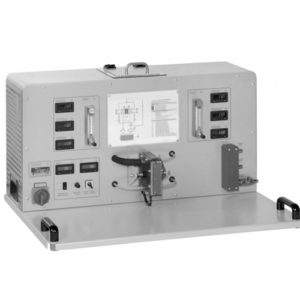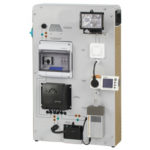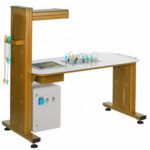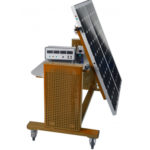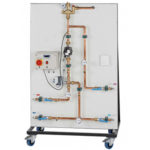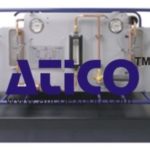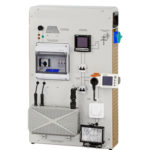The experimental unit demonstrates cooling using the Peltier effect. Peltier elements utilise the thermoelectric effect of some semiconductors. The thermoelectric effect is the reverse of the known thermopower effect which is e.g. used when measuring temperatures using thermocouplers. If current flows through a Peltier element, one end of the semiconductor becomes hot and the other cold. By a suitable connection of p- and n-doped semiconductor materials the refrigeration capacity can be increased sufficiently to be usable.
The benefits of cold production using Peltier elements are: Peltier elements are wear and maintenance-free, noiseless, independent of position and easy to adjust in their refrigeration capacity via the supply voltage. In addition, no refrigerants are required. Peltier elements are used for small capacities in thermography as beverage chillers or in medical engineering. Their low efficiency is a disadvantage.
Learning Objectives/Experiments
- Function and operation of a Peltier element
- For cooling
- As heat pump
- Determination of the refrigeration and heating capacity
- Recording typical characteristics, such as refrigeration capacity, via temperature differences energy balance
- Calculating the coefficient of performance
Specification
- Functional model of a Peltier refrigeration system
- Experimental unit with clear design of all components at the front
- Water-cooled Peltier element
- Shared water circuit for heating and cooling with tank, pump and flow meters
- Electrical power freely adjustable via potentiometer
- Digital displays for temperature, current and voltage
- Flow meter measurement of the water flows via rotameters
Technical Data
- Peltier element
- max. refrigeration capacity: 191,4W
- max. current: 22,6A
- max. voltage: 16,9V
- max. temperature difference: 77,8K
- hot side temperature: 50°C
- Pump
- power consumption: 120W
- max. flow rate: 1000L/h
- max. head: 30m
- Water tank
- content: 7L
- Measuring ranges
- current: 0…20A
- voltage: 0…200V
- temperature: 2x -30…80°C, 4x 0…100°C
- flow rate: 2…27L/h, 15…105L/h
- 230V, 50Hz, 1 phase
- 230V, 60Hz, 1 phase
- 120V, 60Hz, 1 phase

